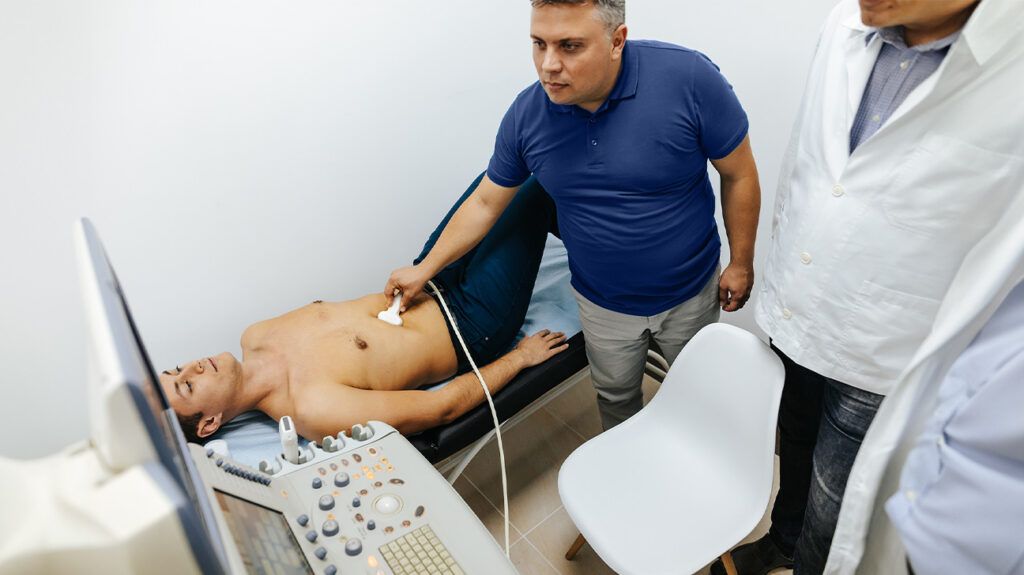Many types of liver disease can develop for various reasons. These can include contracting a viral infection, consuming excess alcohol, and having a health condition that impairs the immune system.
The liver is the largest internal organ in the body. It performs many vital functions, including detoxification, protein synthesis, and the production of chemicals that help digest food.
Liver disease is any condition that directly affects the liver and its function. There are several different types of liver disease, including fatty liver disease, viral hepatitis, hemochromatosis, and liver cancer.

Hepatitis refers to inflammation of the liver. Typically, hepatitis occurs due to viral infections that result in damage to the liver and can lead to a range of health problems. Types of hepatitis can include:
Hepatitis can spread through contact with the bodily fluids of someone who has the infection. These fluids
Symptoms of hepatitis
- fatigue
- diarrhea
- fever
- dark colored urine
- clay-colored stools
- nausea
- abdominal pain
- pain in the joints
- loss of appetite
- jaundice
Treatment for hepatitis may depend on the type of infection a person has. Hepatitis A
Currently, there are no specific treatments for acute hepatitis B. However, a healthcare professional may prescribe medications, such as direct-acting antiviral (DAA) drugs, to treat chronic hepatitis B. DAA medications can also treat both acute and chronic hepatitis C.
Fatty liver disease is a condition in which fatty deposits build up in the liver. These deposits can lead to enlargement, scarring, pain, and inflammation of the liver.
There are three main types of fatty liver disease,
- Non-alcohol-related fatty liver disease (NAFL): This describes a buildup of fat in the liver not due to alcohol consumption. Instead, it is often in relation to being overweight or having obesity. NAFL can cause the liver to become larger and more painful. NAFL does not typically cause inflammation but can progress and lead to further complications or liver damage.
- Nonalcoholic steatohepatitis (NASH): This type refers to a buildup of fat in the liver, in addition to experiencing liver inflammation and damage. It also does not relate to alcohol consumption. NASH can cause scarring of the liver and may lead to cirrhosis.
- Alcohol-associated liver disease: This involves a buildup of fat in the liver due to excessive alcohol consumption.
Fatty liver disease typically presents no symptoms until the later stages of the condition. However, a person may experience fatigue and pain in the upper right side of the abdomen.
An autoimmune condition is when the immune system mistakenly attacks healthy cells. Liver disease due to autoimmune conditions can eventually lead to scarring of the liver, liver failure, and liver cancer. Typical symptoms can include fatigue, joint pain, nausea, jaundice, itchy skin, low appetite, and discoloration of urine and stools.
There are several autoimmune conditions which can lead to liver disease, including:
- Autoimmune hepatitis: This is when the immune system attacks the liver, causing liver inflammation and damage.
- Primary biliary cholangitis (PBC): PBC is a chronic condition where the immune system attacks and destroys healthy bile duct cells inside the liver. The bile ducts carry bile from the liver to the gallbladder and small intestine to aid digestion. When there are no bile ducts, the bile cannot leave the liver, resulting in liver damage.
- Primary sclerosing cholangitis (PSC): PSC is a condition that results in inflammation, scarring, and hardening of the walls of bile ducts in the liver. Eventually, the bile ducts narrow and block, preventing bile from leaving the liver.
Some types of liver disease may result from inheriting genetic alterations. Genetic liver disease is typically less common than other forms of liver disease. Genetic liver conditions can lead to liver scarring, liver failure, and liver cancer. Symptoms can include fatigue, nausea, vomiting, jaundice, abdominal pain, discoloration of urine and stools, itchy skin, and loss of sex drive.
Genetic conditions can include:
- Hemochromatosis: Also known as iron overload, this is when the body absorbs more iron from food than is necessary. The excess iron can build up in the liver and cause damage.
- Wilson’s disease: This condition occurs when the body stores excess copper from food instead of moving it into bile, causing a buildup in the liver.
- Alagille syndrome: This condition is when the body does not develop the typical amount of small bile ducts, resulting in a buildup of bile in the liver.
- Alpha-1 antitrypsin deficiency (Alpha-1): This condition occurs when the body does not create enough healthy alpha-1 protein. This can prevent the liver from breaking down various enzymes and lead to a buildup of atypical alpha-1 protein, which can damage the liver.
Drug-induced liver injury (DILI), also known as drug-induced liver disease,
Symptoms can include jaundice, fatigue, itchy skin, abdominal pain, and nausea. A person will typically make a full recovery from DILI. However, this can take time.
Primary liver cancer refers to cancer that starts and forms in the liver. Bile duct cancer develops in the bile ducts inside and outside of the liver. Both types of liver cancer can develop when a person has liver disease.
Hepatocellular carcinoma (HCC) is the
Liver cirrhosis occurs when the liver suffers permanent damage due to a buildup of scarring. The excess scar tissue starts to block the flow of blood through the liver, which can lead to liver failure.
A 2019 review suggests that liver cirrhosis affects approximately
- fatigue
- itchy skin
- loss of appetite
- nausea
- vomiting
- unexplained weight loss
- abdominal pain
- loss of sex drive
There are many types of liver disease, all with several causes. These can include viral infections, a buildup of fat in the liver, genetic conditions, and autoimmune conditions.
Symptoms of liver disease can vary but typically include jaundice, abdominal pain, discoloration of urine and stools, fatigue, nausea, vomiting, and joint pain.
Treatment for liver disease will vary depending on the underlying cause.
